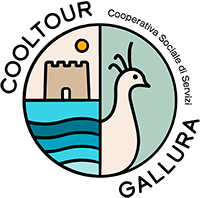During the period of Spanish domination King Philip II ordered to build the Tower of Longonsardo on the foreland promontory of Santa Teresa (at that time called Longonsardo). The raising of the coastal tower is strictly linked to the decay of the Castle of Longonsardo (or Longosardo), situated in the harbour’s inlet, opposite the current urban settlement. The castle was destroyed around 1423, which meant the coast was exposed to the assaults of pirates, bandits and smugglers for almost a century. In 1578, the viceroy in Sardinia of King Philip II arranged with the latter a global defence plan for the island’s coasts through a network of watchtowers and the Tower of Longonsardo was included in the 1587 document containing the definitive programme.
The tower’s main aim was to stem the pirates’ in- cursions, as well as smuggling with neighbouring Corsica. The rocky spur between the access to the Longonsardo fiord and the cliff at the east of Rena Bianca beach was strategically suited to control the coast. Although there is no certainty about the tower’s construction date, it was undoubtedly finished in 1599, since the tower was in activity by that time. Later on, the whole rocky spur was fortified by means of defensive walls forming a sort of triangular trench, of which just a small part is left. Made of granite blocks, the tower is 19 metres in diameter, with an area of 285 squared meters and it’s 11 metres high.
There were no stairs in the tower (a rope ladder was used for a long time instead) and it rises 6 metres above sea level. In the middle of the main area, originally divided into three rooms, stands a big column that supports the vaulted ceiling. Moreover, there is still a basin dug into the rock, next to the south-eastern internal wall, that supplied the garri- son with rainwater. Also in the internal part, a spi- ral staircase leads to the vault, where a one-metre- high wall – interrupted by loopholes – forms the tower’s battlements.
Opposite the access door, on the east, there is a kind of rectangular window that, besides lighting the place, was used to see over the sea and probably to allow the use of light weapons in addition to the heavy ones on the terrace. An “Alcaide” – whose initial duty was to control 57 miles of coast partially visible from the fortalice – used to live in the tower, and was later supplied with four dragoons taken from Tempio’s detachment.
The chronicles registered a barbarian attack in 1658 and various documents witness the fortalice’s surveillance activity at that time.
In 1720, by means of the Treaty of London, Sardinia started being ruled by the Savoia family and in 1792 adjustments and repairs were made. Furthermore, to prevent attacks from the French, it was planned to set four 16-bore cannons and to add up to 10 soldiers.
Regrettably, some documents record that the reairing works had not been made accurately enough and that the Viceroy had not actually enhanced the island’s defence system, so that the Tower of Longonsardo’s garrison tailed off to just one unit in 1794, which was actually a particularly strained period, due to the role of Corsica as France’s bridgehead during its revolutionary period.
One of the most vicious episodes of the island’s revolutionary decade occurred in June 1802, involving the governor Giommaria Angioy, who was fighting against feudalism. Exiled in France, Angioy still had his followers who kept returning to Sardinia to stir up the folks against the Savoia rulers. On the night of 16th June 1802 the Longonsardo Tower was assaulted and conquered by a small group of Sardinian emigrates living in Corsica and followers of Angioy, headed by the priest Francesco Sanna Corda. He was encircled and killed by the royal army at the Tower’s feet, where he was apparently buried. In that circumstance, the captain Pietro Francesco Maria Magnon took leadership of the Tower and he soon noticed the geographical importance of the town and the possibility for it to be autonomous. He therefore solicited the King and the reign’s law officers with several letters. On 12 August 1808 King Vittorio Emanuele I ordered the creation of the new town. Magnon is therefore considered the main promoter of Santa Teresa’s founding.
… did you know that…?
Around 1657, from the Tower of Longonsardo, the “Alcaide” Givanni Galluresu would defend the coast all by himself, avoiding the landing of a gang of pirates. Unfotunately, the irreproachable governor of the tower would eventually become, some years later, the most frightening bandit of the time, almost the forefather of banditry and kidnapping.
On 12 June 1802 the small group of Sardinian exiles headed by Sanna Corda and by Cillocco land on the coast of Gallura. For four days the French flag will be hoisted in the three towers of Isola Rossa, Vignola and Longonsardo.
A municipality resolution dated 1912 attests the painter of the Marchese Anselmo Bucci’s request to buy the Spanish Tower to make it his own house and his workshop. The municipality had shown its favour but the ongoing events such as the first world war outbreak and Bucci’s consequent enrolment in the cyclists’ battalion prevented him from becoming a resident of the small town.
